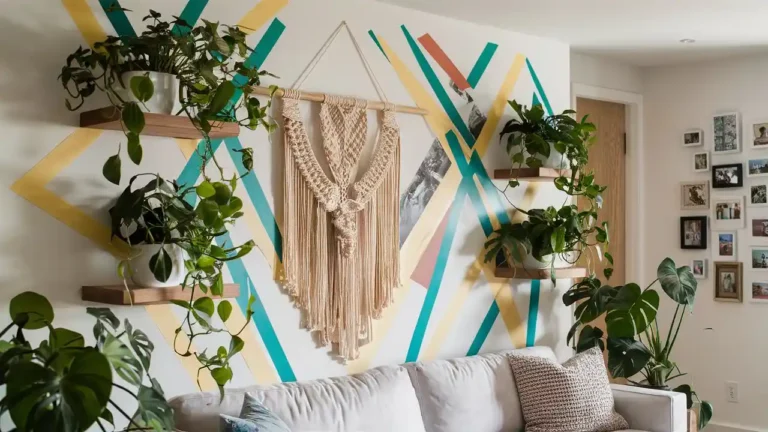In today’s ever-evolving world of interior design, your walls offer a blank canvas for you to express your personality, save money, and add value to your home. DIY wall decor presents a remarkable opportunity to transform plain walls into visually engaging, thoughtful, and one-of-a-kind pieces of art. Whether you’re decorating a cozy apartment, revamping a home office, or infusing charm into a kid’s room, crafting your own wall art allows you to incorporate a personal touch that store-bought items can seldom match.
This article will guide you through the incredible world of DIY wall decor—from understanding the fundamentals and exploring various materials and techniques, to discovering creative project ideas and expert maintenance tips. You’ll learn how to create art that reflects your style while staying budget-friendly and eco-conscious. Get ready to roll up your sleeves and create a space that truly resonates with who you are.
Table of Contents
Why DIY Wall Decor is So Popular in 2025
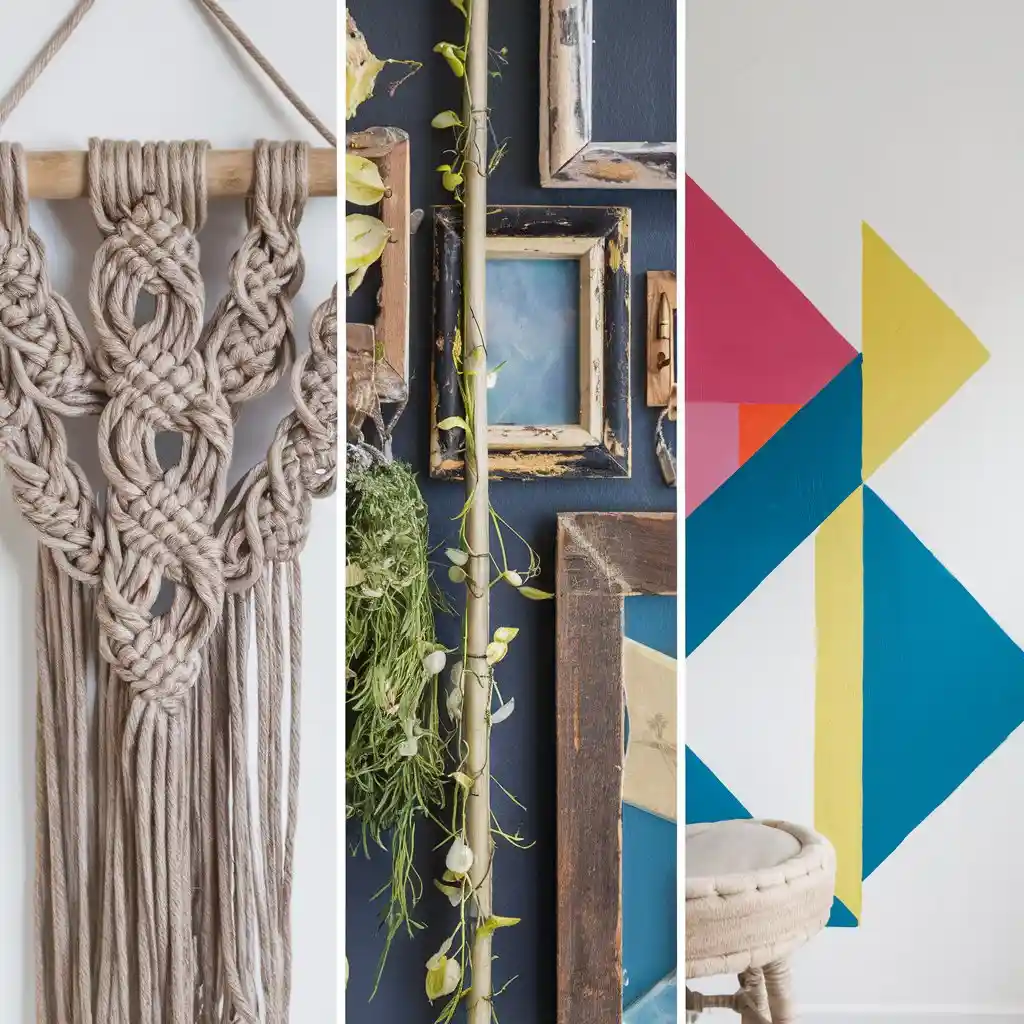
Designing your own wall decorations is not just a trend—it’s a lifestyle choice that reflects your creativity and individuality. Here’s why DIY wall decor is at the forefront of home design today:
Express Your Unique Style
When you craft your own wall art, every piece becomes a personal statement. Unlike mass-produced decor, DIY projects allow you to choose every detail—colors, textures, materials—ensuring the final product mirrors your own taste and personality.
Cost-Effective and Budget-Friendly
Budget constraints often limit decorating options. DIY wall decor empowers you to transform your space without a hefty price tag. By repurposing materials or using affordable supplies, you can achieve stunning results without overspending.
Eco-Friendly and Sustainable
In an age where sustainability matters, DIY projects often involve recycling and upcycling materials. Using reclaimed wood, recycled plastics, or even leftover fabric not only reduces your environmental impact but also lends each piece a story and unique character.
Boosts Creativity and Well-Being
The process of creating art is inherently therapeutic. Engaging in a hands-on project helps relieve stress and stimulates your creativity. Moreover, an inspiring wall not only beautifies your home but also lifts your mood and inspires productivity.
A Perfect Fit for 2025 Trends
With 2025 emphasizing eco-conscious living, flexible design, and personalization, DIY wall decor is more relevant than ever. Modern trends show a strong preference for creative, sustainable, and eclectic designs that stand out.
What Is DIY Wall Decor?
Defining DIY Wall Decor and Its Scope
DIY wall decor encompasses any decoration or artistic installation that you create yourself to adorn your walls. It includes a variety of forms such as:
- DIY Wall Art: Paintings, mixed media canvases, or hand-crafted artworks.
- DIY Wall Hangings: Items like macramé, woven tapestries, or beaded curtains.
- DIY Wall Decorations: Projects that merge art with function, such as pegboard organizers or customizable DIY murals.
Unlike ready-made decor items, DIY wall art and decorations are unique because they are tailored to your individual style. You have the freedom to experiment with color, texture, and form to create a piece that stands out as a true reflection of your personality.
The Importance of DIY for Personalization
Creating your own wall art means you’re not confined by the choices available in stores. Instead, you decide every detail, from the concept and design to the execution. This hands-on approach offers multiple advantages:
- Creative Expression: Every project is a way to showcase your artistic vision.
- Affordability: DIY projects often cost less compared to purchasing high-end decor.
- Customization: Tailor each piece to fit your space perfectly—be it a bold centerpiece in the living room or a subtle accent in your home office.
- Sustainability: Utilizing recycled or upcycled materials reduces waste and supports eco-friendly practices.
By embracing DIY wall decor, you create spaces that are uniquely yours—a reflection of your passion, creativity, and commitment to sustainability.
Materials and Techniques
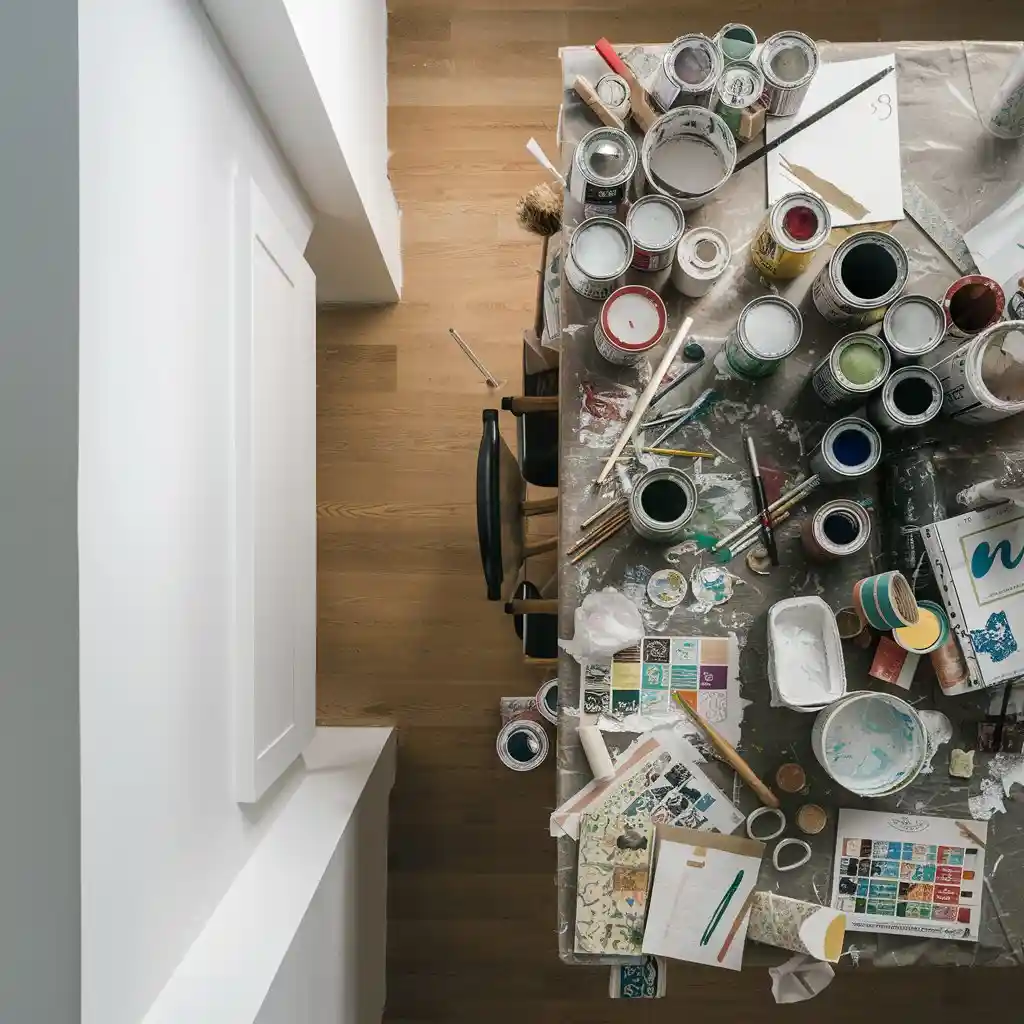
Materials for DIY Wall Decor
Common Materials Used
For starters, choosing the right materials is crucial for a successful DIY project. Here are some popular options:
- Specialty Paints: Consider using textured or metallic paints designed to create depth and visual interest on surfaces.
- Stencils: Ideal for adding patterns or creating clean shapes on your wall. Stencils allow for repeatable designs and can be easily modified for a different look.
- Self-Hardening Clay/Modeling Paste: Perfect for adding a tactile, three-dimensional element. You can sculpt details that provide a subtle relief on the wall.
- Resin: Offers a glossy and modern finish. Resin is excellent for creating smooth surfaces with intricate details.
- Textiles: Fabrics, such as cotton or jute, are used in macramé projects or as a background for mixed-media designs.
- Recycled Materials: Old wood, cardboard, or even recycled plastics can be repurposed into eye-catching decor. These not only save money but also support eco-friendly practices.
Each material has unique advantages; specialty paints might provide durability and a unique finish, while self-hardening clay allows for customizable, detailed textures.
Advantages of Using Diverse Materials
By experimenting with various materials, you can achieve different textures and styles. For example:
- Durability: Materials like resin and specialty paints are durable and suitable for high-traffic areas.
- Texture: Self-hardening clay, when applied in layers, creates a tactile, artisan feel.
- Sustainability: Recycled materials add an ethical dimension, appealing to eco-conscious individuals.
These options empower you to mix and match according to your vision and the functional needs of your space.
Techniques for Creating 3D and Textured Wall Decorations
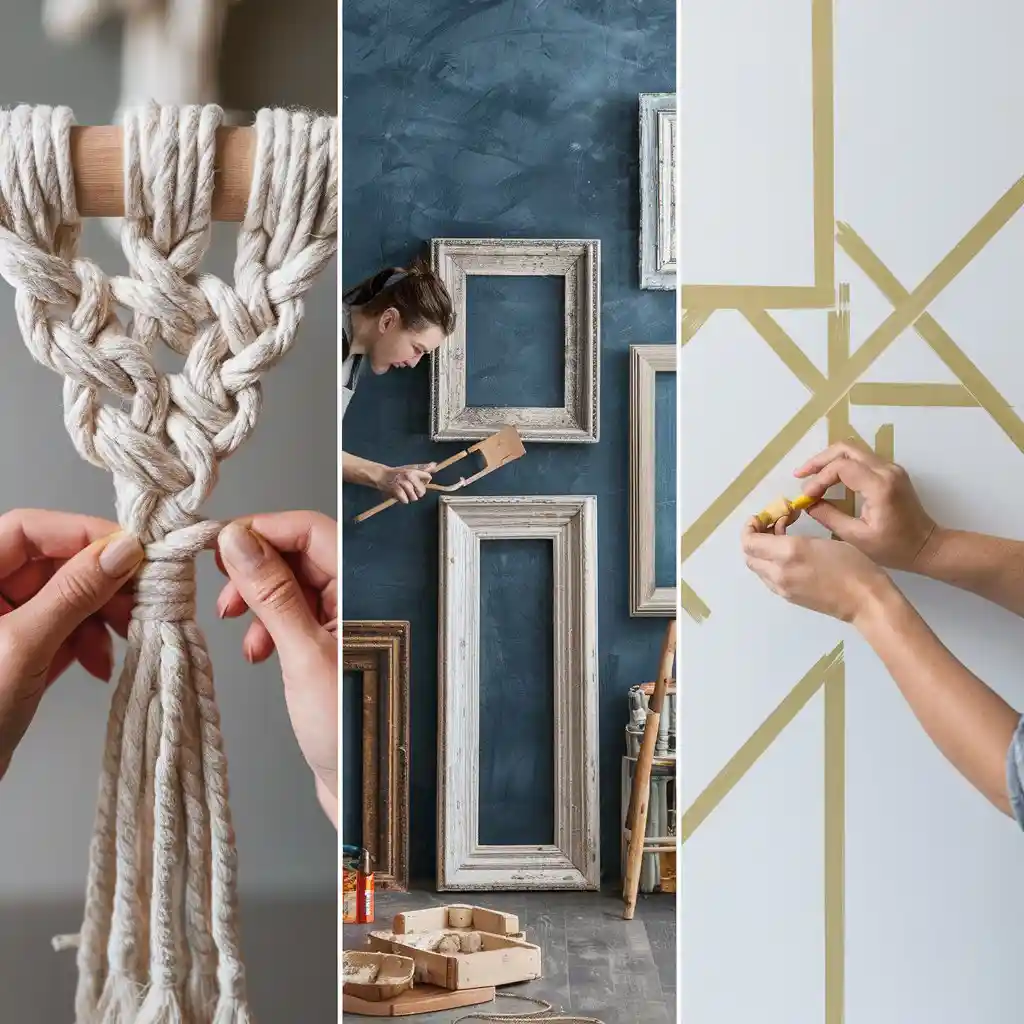
Basic Techniques
Enhancing your DIY wall decor with texture transforms flat surfaces into dynamic works of art. Here are a few common techniques:
- Trompe-l’œil: A classical technique that uses perspective and shading to trick the eye into seeing depth. This method can make a wall appear to have architectural features or interesting patterns.
- Layering with Modeling Paste: Apply modeling paste in layers to build up a textured surface. This technique works especially well on canvases or temporary boards.
- Stencil Art: Use stencils to create clean, repeatable patterns. Whether you are going for geometric shapes or intricate designs, stencils help produce professional-looking results.
- Washi Tape Applications: Washi tape isn’t just for scrapbooking. It can be used to create temporary, changeable designs—ideal for spaces where you want a little flexibility.
- Mixed Media: Combine different elements, such as fabric, paper, and paint, to add complexity and uniqueness.
Advanced Techniques
For those ready to push the envelope, advanced methods can provide even greater depth and sophistication:
- 3D Effects with Light and Shadow: Use strategic lighting (like accent LEDs) to emphasize texture and depth, making your art seem to come alive.
- Geometric Pattern Creation: Follow a step-by-step guide for creating patterns that pop, using both stencils and freehand techniques.
- Upcycling Techniques: Transform old, discarded materials into modern art—this might include repurposing wood or metal to complement your wall decor.
- Digital Design Integration: Use design software to plan your layout and test different textures and colors before starting your physical project.
With both basic and advanced techniques at your disposal, every project can be unique—letting you experiment until you find the perfect balance for your space.
Creative Ideas and Inspirations
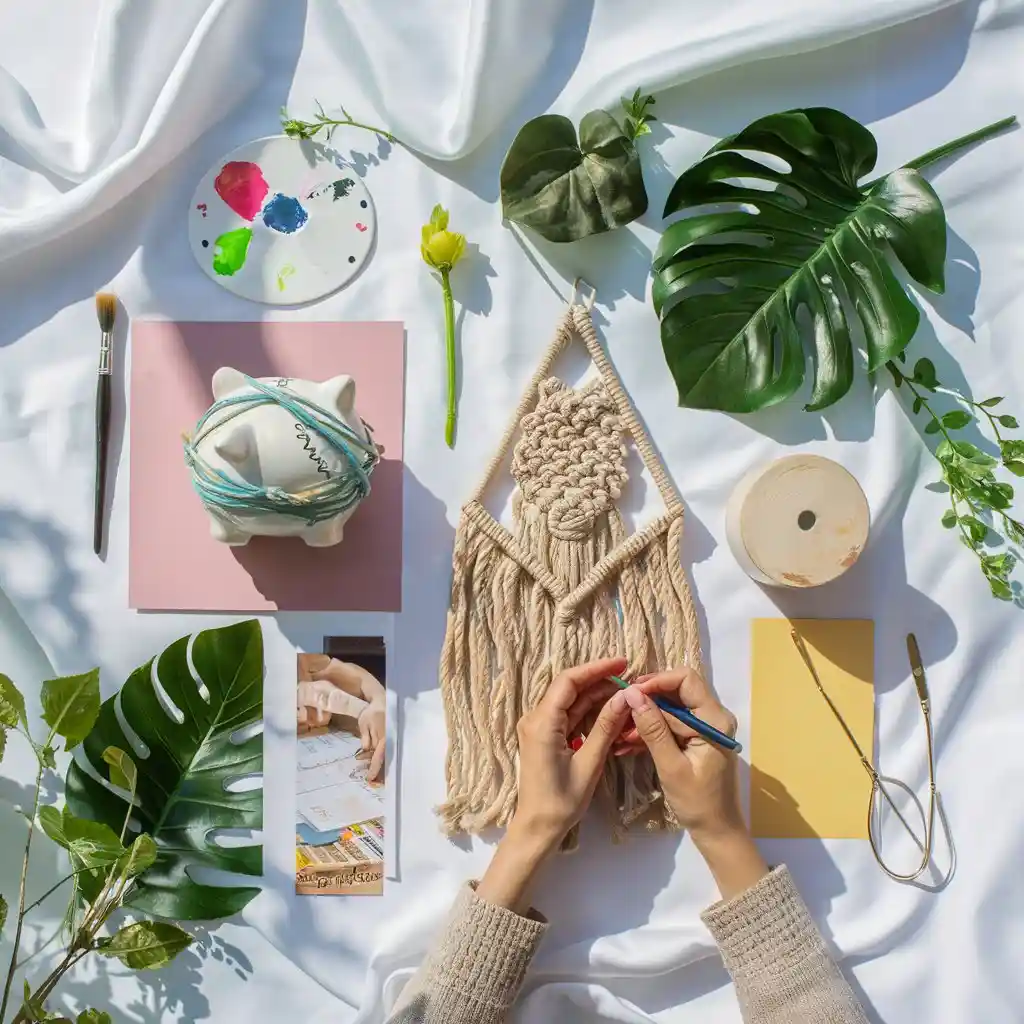
General and Thematic Ideas
When it comes to DIY wall decor, the options are nearly limitless. Here are some ideas to spark your creativity:
- Gallery Walls: Create a curated gallery using your favorite photos, artwork, or printed quotes. Mix various frame styles and sizes to add personality.
- Macramé Wall Hangings: A timeless boho choice that adds texture and a tactile element. Perfect for living rooms or bedrooms.
- Paper Mâché Sculptures: Ideal for adding a playful or artistic focal point, especially in a creative space.
- Wall Tapestries: Use fabric to cover large wall areas. You can buy pre-made tapestries or create your own.
- Mixed Media Collages: Blend paint, fabric, and upcycled objects to design intricate collages that reflect your personal style.
Example Projects:
- Small Apartment Inspiration: “How to create easy DIY wall decor for a small apartment?” – Use washi tape and printable art to keep it simple.
- Kids’ Room Fun: “What are the best DIY wall decor projects for kids’ rooms?” – Try crafting colorful, interactive art that kids can help create.
- Rustic Inspiration: Blend reclaimed wood and vintage objects to produce an industrial yet charming piece for a cozy setting.
DIY Projects and Tutorials
Here are a few step-by-step projects you can dive into:
- Macramé Wall Hanging Tutorial: Learn the basic knots to create a boho-chic wall hanging. Numerous videos and guides are available online.
- Upcycled Gallery Wall: Gather old photo frames and refurbish them with a coat of paint. Then, arrange them into a cohesive gallery display.
- Reclaimed Wood Art: Take an old plank, sand it down, and let your creativity flow with bold paint techniques or geometric stenciling.
- Fabric Wall Hanging: Stretch unique fabrics over reclaimed wood frames to create a vibrant, texture-rich wall piece.
- Geometric Mural: Use painter’s tape to map out geometric shapes on your wall and fill them with contrasting colors, creating an optical illusion effect.
These projects are not only fun and creative but also adaptable. Tailor each project to suit your space and personal style.
Applications and Tips for Different Spaces
Decorating Your Living Room
Your living room is the heart of your home and an ideal canvas for showcasing your DIY wall decor. Consider these ideas:
- Gallery Walls: Assemble a mix of art prints, photos, and handcrafted pieces on one wall to create a personalized display.
- Statement Pieces: Use a large, bold piece like a macramé wall hanging or an abstract painted mural as the focal point above your sofa.
- Accent Lighting: Strategically placed lights can highlight your artwork and add depth to the overall decor.
These choices will make your living room not just aesthetically pleasing, but also a reflection of your personality and creativity.
DIY for Bedrooms and Home Offices
For personal spaces like bedrooms and home offices, the goal is to combine practicality with inspiration.
- Accent Walls: Create a soft yet eye-catching accent wall by applying a DIY painting technique or a textured wall hanging.
- Functional Art: Consider elements like pegboards or floating shelves that serve a dual purpose—decoration and storage.
- Personal Touches: Incorporate elements that reflect your personality, such as custom quotes, favorite photos, or handmade crafts.
These tips are particularly valuable if you want a home office that is both productive and inspiring.
Outdoor and Seasonal Wall Decor
Why should your creativity stop at the door? Extend your DIY projects outdoors or create seasonal themes:
- Outdoor Wall Hangings: Use weather-resistant materials to craft decor for patios or garden walls.
- Seasonal Projects: Change up your decor with the seasons—DIY fall leaf garlands, winter wreaths, or spring floral designs.
- Temporary Installations: For spaces that may change often, consider removable or temporary wall decorations that are easily updated.
Seasonal DIY projects add freshness and allow you to experiment with different styles throughout the year.
Tools, Resources, and Expert Tips
Essential Tools for Your DIY Projects
Getting started on your DIY wall decor projects requires the right tools. Here’s a recommended toolkit:
- Basic Craft Tools: Paintbrushes, foam rollers, scissors, precision knives, and measuring tapes.
- Adhesives: Hot glue guns, craft adhesives, and removable mounting strips for easy installation without wall damage.
- Stencils and Templates: For creating consistent patterns and geometric designs.
- Organizational Supplies: Bins, trays, and labels to keep your materials organized and accessible.
- Digital Tools: Software like Canva or Pinterest boards can help you plan layouts and color palettes.
Having an organized workspace and proper tools increases efficiency and ensures better results.
Online Resources and Communities
Expand your DIY knowledge through these resources:
- Tutorial Websites and Blogs: Pinterest, Houzz, and Etsy often feature DIY wall decor ideas and step-by-step guides.
- YouTube Channels: Channels like The Sorry Girls, HomeMadeModern, and DIY Creators offer video tutorials.
- Social Media: Join Facebook groups or Instagram hashtags (#DIYWallDecor, #HandmadeWallArt) to share tips and get inspiration.
- Workshops & Meetups: Local craft stores or design studios often host workshops that can enhance your skills.
Expert Tips for Success
- Plan Before You Start: Sketch out your design and list all the necessary materials. Testing your design on a smaller piece of cardboard or a sample board can save time and money.
- Practice Your Techniques: Whether you’re perfecting a macramé knot or experimenting with texture layers, practice is key.
- Embrace Imperfection: Remember, the uniqueness of DIY projects is in their handcrafted nature—minor imperfections add character.
- Stay Organized: Keep your workspace tidy and your materials labeled to easily switch between projects.
- Regular Updates: Refresh your decor periodically to keep your space lively and aligned with your evolving tastes.
These expert tips not only help ensure that your projects turn out beautifully but also make the creative process more enjoyable.
Frequently Asked Questions (FAQ)
Q1: How can I create a cozy DIY wall decor for a small apartment?
A: Use light, neutral colors combined with small frames, removable adhesives, and multifunctional decor solutions to maximize your space without cluttering it.
Q2: What are some easy DIY wall art projects for beginners?
A: Start with projects like macramé wall hangings, washi tape designs, or simple abstract canvas paintings. These projects require minimal tools and materials.
Q3: How can I use recycled materials for DIY wall decor?
A: Repurpose items like old wood, cardboard, or scrap fabric to create unique, eco-friendly wall art. Upcycling is great for adding personality while also being sustainable.
Q4: What tools do I need for DIY wall art projects?
A: Essential tools include paintbrushes, scissors, precision cutters, stencils, adhesives, and organizational containers for storing your materials.
Q5: How can I maintain and clean handmade DIY wall decorations?
A: Regularly dust your creations with a soft cloth. For painted or textured surfaces, use a mild cleaning solution appropriate for the specific materials.
Conclusion and Call to Action
Your walls are the canvas of your home, and DIY wall decor is your opportunity to make them truly unique. By embracing a range of creative projects—from minimalist artworks to textured, three-dimensional pieces—you can create a space that is not only budget-friendly but also a genuine expression of your personality.
Now is the time to get creative! Even small projects can have a huge impact on your space. Start with a simple DIY project today, then build upon it by exploring more complex ideas as your skills develop. Share your progress with us on social media using #DIYWallDecorInspiration and join our community of makers.
Ready to transform your home? Dive into your next DIY project, and let your walls tell your unique story.

